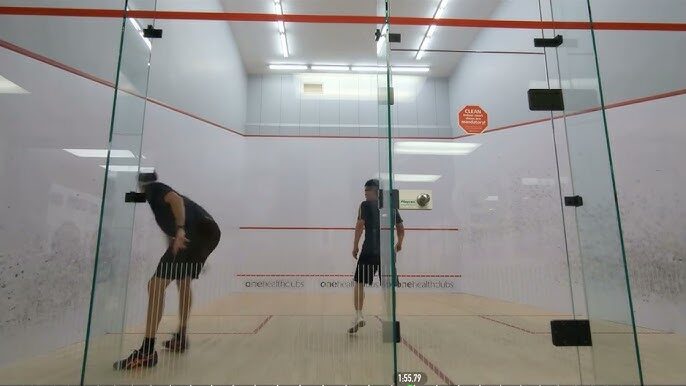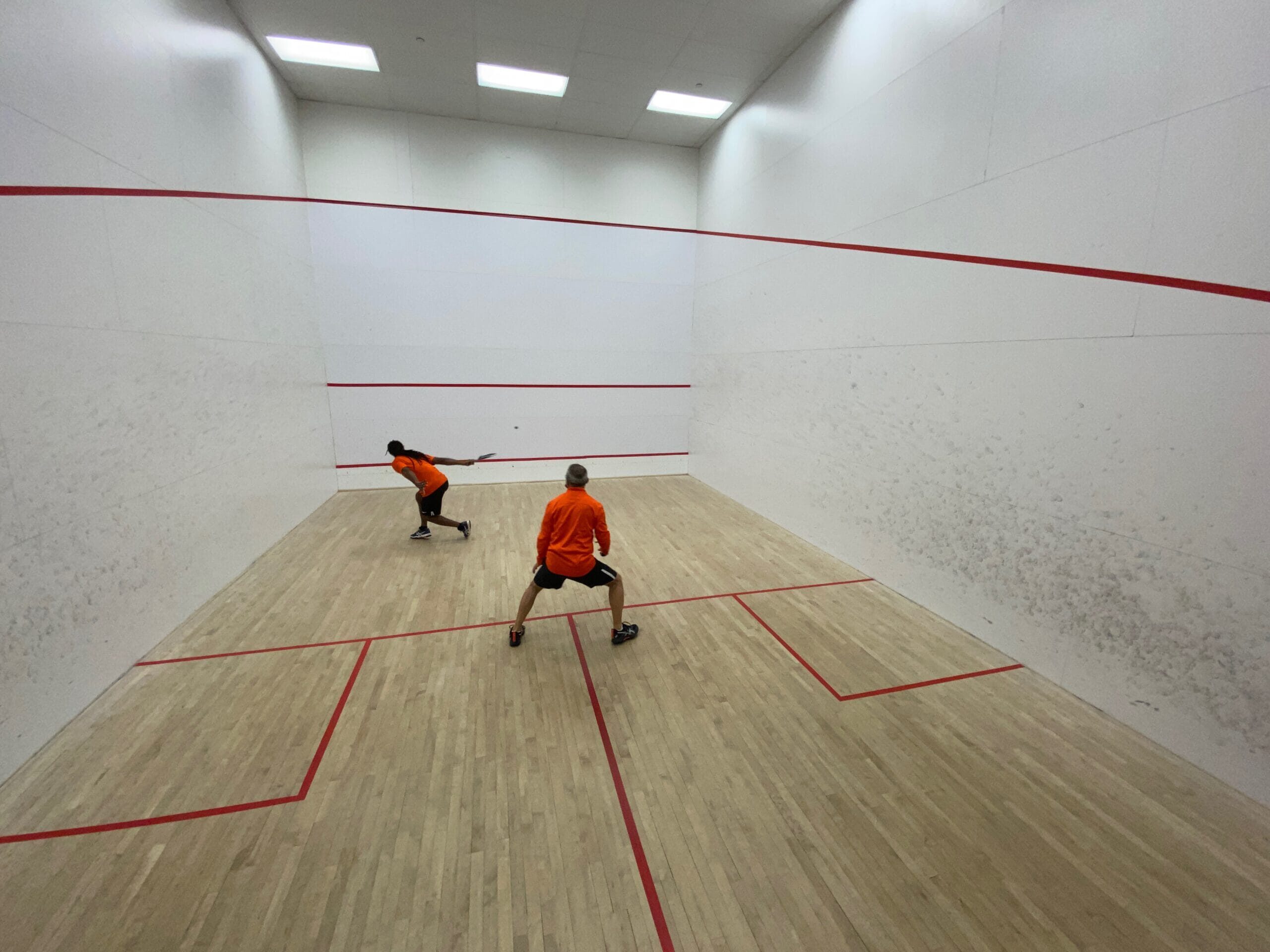Squash is an exhilarating and fast-paced sport that challenges both your physical and mental abilities. Whether you are just starting out or looking to improve your game, mastering the basic squash techniques is essential for long-term success. In this article, we’ll break down the key techniques every beginner must learn to enhance their performance on the court. By focusing on these fundamentals, you’ll set a strong foundation for your squash journey and quickly notice improvements in your game.
1. Understanding the Basics: The Squash Court and Equipment
Before diving into the techniques, it’s important to understand the basic layout of the squash court and the necessary equipment.
Squash Court Layout:
- The Court: The standard squash court is 32 feet long and 21 feet wide, with marked lines for boundaries. The “T” in the center is the most important position, as it’s where players should aim to return to after each shot.
- The Lines: The service box and the outline lines determine whether the ball is in or out. It’s crucial to get familiar with these markings as they guide your movement and positioning.
Essential Squash Equipment:
- Racquet: Choose a racquet that suits your style and comfort. For beginners, a lighter racquet with a larger head is a good option as it helps with control and reduces the risk of injury.
- Ball: Squash balls come in different speeds (yellow, red, and green dots). As a beginner, start with a ball that’s slower to allow you more time to react and improve your shots.
- Shoes: Proper squash shoes provide grip and agility, crucial for quick movements on the court.
2. Proper Grip: The Foundation of Every Shot
The grip is the first thing a beginner should focus on, as it serves as the foundation for all other shots.
Correct Grip:
- Neutral Grip: This is the standard grip where the racquet is held with your thumb and index finger forming a “V” shape. This grip allows for versatility and is ideal for both forehand and backhand shots.
- Forehand Grip: For forehand shots, hold the racquet firmly but not too tight, ensuring your wrist remains flexible.
- Backhand Grip: Rotate the racquet slightly in your hand to achieve better control during backhand shots.
Common Grip Mistakes to Avoid:
- Holding the racquet too tightly – this restricts your movement and flexibility.
- Using the wrong grip for certain shots – using a forehand grip for a backhand shot leads to discomfort and inaccuracy.
3. Stance and Positioning: Balance is Key
Your stance is just as important as your grip. Maintaining balance allows you to move swiftly around the court and execute shots efficiently.
Proper Stance:
- Ready Position: Stand with your feet shoulder-width apart and knees slightly bent, keeping your weight on the balls of your feet. Hold the racquet with both hands in front of you, slightly above waist height.
- Positioning for Shots: Ensure that you position yourself in line with the ball’s trajectory. For forehand and backhand shots, position your body at a 45-degree angle to the wall for maximum reach and control.
Recovery to the T:
- After each shot, always aim to recover to the “T” (the center of the court). This allows you to respond quickly to your opponent’s next move and stay in control of the game.
4. The Forehand Shot: Mastering the Basics
The forehand shot is one of the most fundamental and frequently used shots in squash. It’s crucial for beginners to perfect this technique early on.
Executing a Forehand Shot:
- Approach the Ball: Position yourself so that the ball is slightly to the side of your body.
- Swing: As you swing the racquet, focus on keeping your wrist firm and your follow-through smooth.
- Contact: Make contact with the ball in front of your body, at waist height, for better control and accuracy.
Common Mistakes to Avoid:
- Swinging too hard – this can lead to mis-hits. Focus on control first, then gradually work on adding power.
- Not following through – a short follow-through limits your shot’s accuracy.
Drills to Improve Forehand:
- Practice hitting against a wall, focusing on clean and consistent contact.
- Work on footwork drills to position yourself optimally for the shot.
5. The Backhand Shot: Techniques and Tips
The backhand shot can be tricky for beginners, but with practice, it becomes a vital tool in your squash arsenal.
Performing a Backhand Shot:
- Position: Rotate your body so that the ball is behind you.
- Swing: Extend your non-racquet arm for balance and rotate your body as you swing the racquet. Keep the swing fluid and use your wrist for added control.
- Follow Through: Ensure you follow through with your swing to maintain power and accuracy.
Tips for Beginners:
- Focus on staying low during the backhand to maintain control over the ball.
- Practice hitting the ball with the racquet’s strings to avoid mishits.
Drills for Improving Backhand:
- Use shadow swings to work on the form and fluidity of the backhand.
- Practice backhand drives against the wall, focusing on consistency and power.
6. The Serve: Setting the Tone for the Rally
The serve is one of the few shots that allows you to set the tone of the game. A solid serve is crucial for gaining control of the rally.
Basic Serve Technique:
- Position: Stand in the service box with your racquet hand ready.
- Swing: Toss the ball gently above your head and hit it diagonally into the opposite service box. Focus on hitting the ball with a smooth motion to avoid faults.
- Aim: A good serve should be directed to the back corners of the opponent’s side to make it difficult to return.
Serve Tips:
- Practice serving consistently, focusing on accuracy before power.
- Avoid serving too high or too low, as it makes the ball easier to return.
7. Footwork and Movement: Staying Agile on the Court
Footwork is a fundamental aspect of squash. Good footwork enables you to reach every corner of the court and execute shots effectively.
Footwork Techniques:
- Lunges: Use lunges to quickly move forward and reach balls near the front of the court.
- Side Steps: For side-to-side movement, use short, quick side steps to maintain agility.
- Quick Recovery: After each shot, quickly return to the T position to stay prepared for the next rally.
Footwork Drills:
- Practice lateral movements and quick direction changes with cones or markers.
- Incorporate shuttle drills to build endurance and agility.
8. Defensive Techniques: Staying in Control
In squash, defense is just as important as offense. Knowing how to position yourself defensively gives you the ability to withstand powerful shots and counter effectively.
Defensive Positioning:
- Always keep your racquet in front of you and stay ready to react to your opponent’s shots.
- Position yourself slightly behind the T after every shot, allowing you to quickly move and return a defensive shot.
Tips for Defending:
- Use defensive shots like lobs and drop shots to regain control when under pressure.
- Stay calm under pressure to make accurate returns.
9. Advanced Techniques to Aim for (Optional for Progression)
As you progress, you’ll start working on advanced shots like drop shots, cross-court shots, and lobs. These shots help add variety to your game and make you a more unpredictable opponent.
Advanced Techniques:
- Drop Shots: A delicate shot that lands close to the front wall.
- Lobs: High shots aimed to push your opponent to the back of the court.
- Cross-Court Shots: Shots that cross diagonally, making it harder for your opponent to return.
Conclusion
Mastering these essential squash techniques is key to becoming a skilled and confident player. Focus on developing a strong foundation with proper grip, stance, and basic shots. With consistent practice and the right mindset, you’ll see significant improvements in your game. So grab your racquet, head to the court, and start perfecting these essential squash techniques today!
FAQs
Q: How long does it take to get good at squash?
A: It varies, but with regular practice, beginners can see improvement within a few weeks to months.
Q: What should a beginner focus on in their first lessons?
A: Focus on grip, stance, and learning basic shots like forehands and backhands.
Q: How can I improve my squash game quickly?
A: Practice consistently, work on footwork, and focus on improving your basic shots before progressing to more advanced techniques.
Q: What is the best squash drill for beginners?
A: Simple wall practice is great for beginners to develop consistency and improve both forehand and backhand shots.




